Overview
The automated liquid dispenser significantly enhances laboratory efficiency by improving accuracy, reducing manual labor, and ensuring consistent results. This advancement allows researchers to concentrate on more complex tasks that demand their expertise. Automation minimizes human error, optimizes workflow, and integrates seamlessly with existing lab equipment. Consequently, these improvements lead to better operational outcomes and ensure compliance with safety regulations. The significance of high-quality scientific instruments in laboratory settings cannot be overstated; they are essential for fostering innovation and maintaining rigorous standards.
Introduction
The increasing complexity of laboratory processes necessitates innovative solutions that significantly enhance efficiency and accuracy. Automated liquid dispensers have emerged as pivotal tools in this evolving landscape, empowering laboratories to streamline fluid handling while effectively minimizing human error. As facilities strive for heightened productivity and safety, a critical question arises: how can these automated systems not only transform operational workflows but also ensure consistent quality and compliance in scientific research?
JM Science Automated Liquid Dispenser: Streamline Your Liquid Handling Process
The JM Science automated liquid dispenser significantly enhances laboratory handling processes, especially when used in conjunction with Karl Fischer titrators such as the AQ-300 and AQV-300. By using an automated liquid dispenser for fluid distribution, this device significantly minimizes human error and enhances workflow efficiency—an essential factor for compliance with the Japanese Pharmacopoeia in drug and medicine testing.
Laboratories can optimize their operations, allowing staff to focus on more complex tasks while ensuring that fluid handling is performed consistently and accurately. This automation, which includes an , not only meets but complements the stringent requirements of Karl Fischer titration, reinforcing the importance of high-quality scientific instruments in laboratory settings.
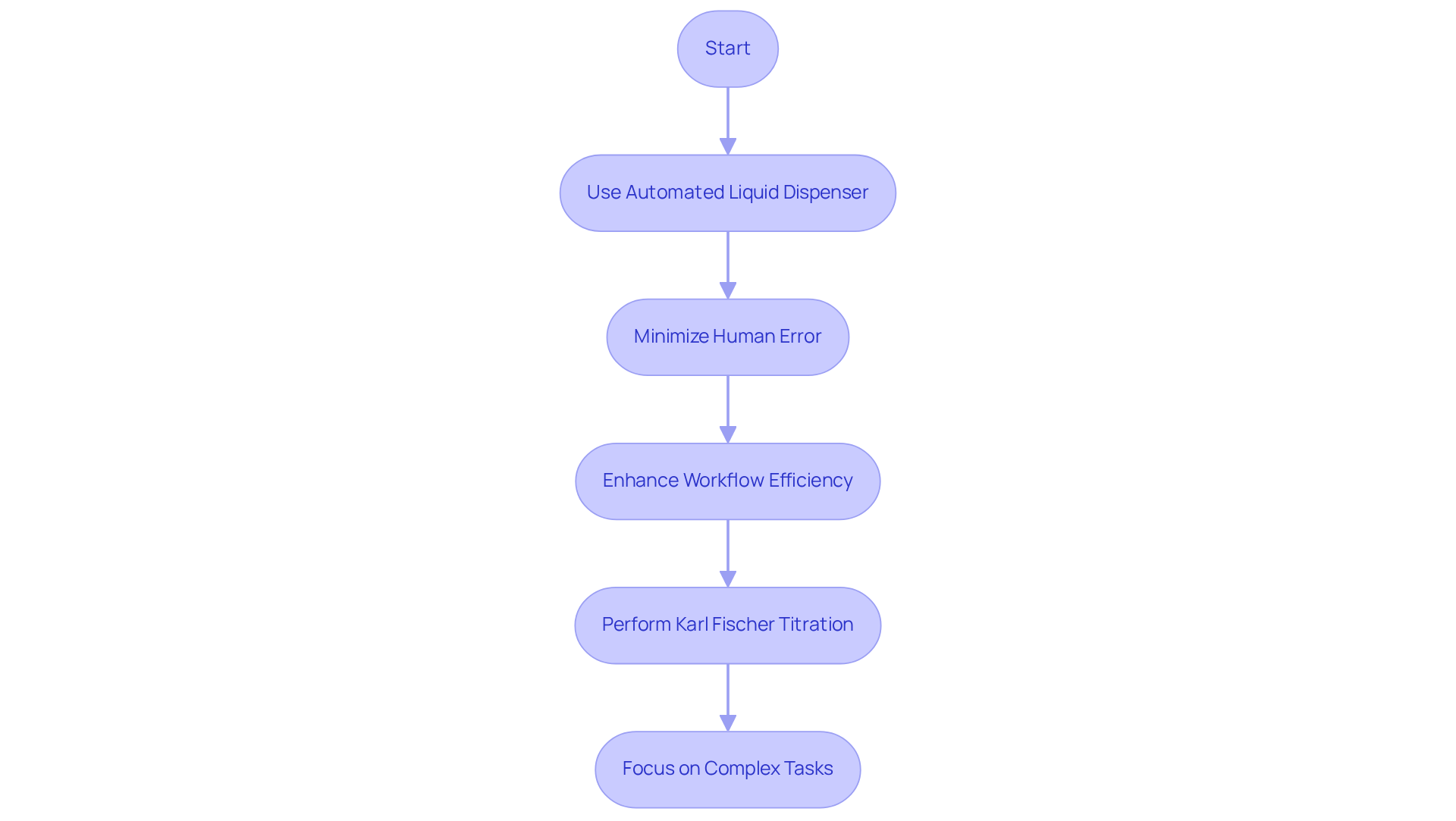
Enhanced Precision: Achieve Accurate Measurements with Automated Dispensers
Automated liquid dispensers significantly enhance accuracy by leveraging advanced technology to dispense precise quantities of liquids. This level of precision is essential in experimental settings, where even minor discrepancies can result in substantial errors. These automated liquid dispensers are equipped with features such as calibration and real-time monitoring to ensure that measurements remain consistently reliable. Consequently, they play a pivotal role in elevating the overall quality of test results, reinforcing the necessity of high-quality scientific instruments in laboratory environments.
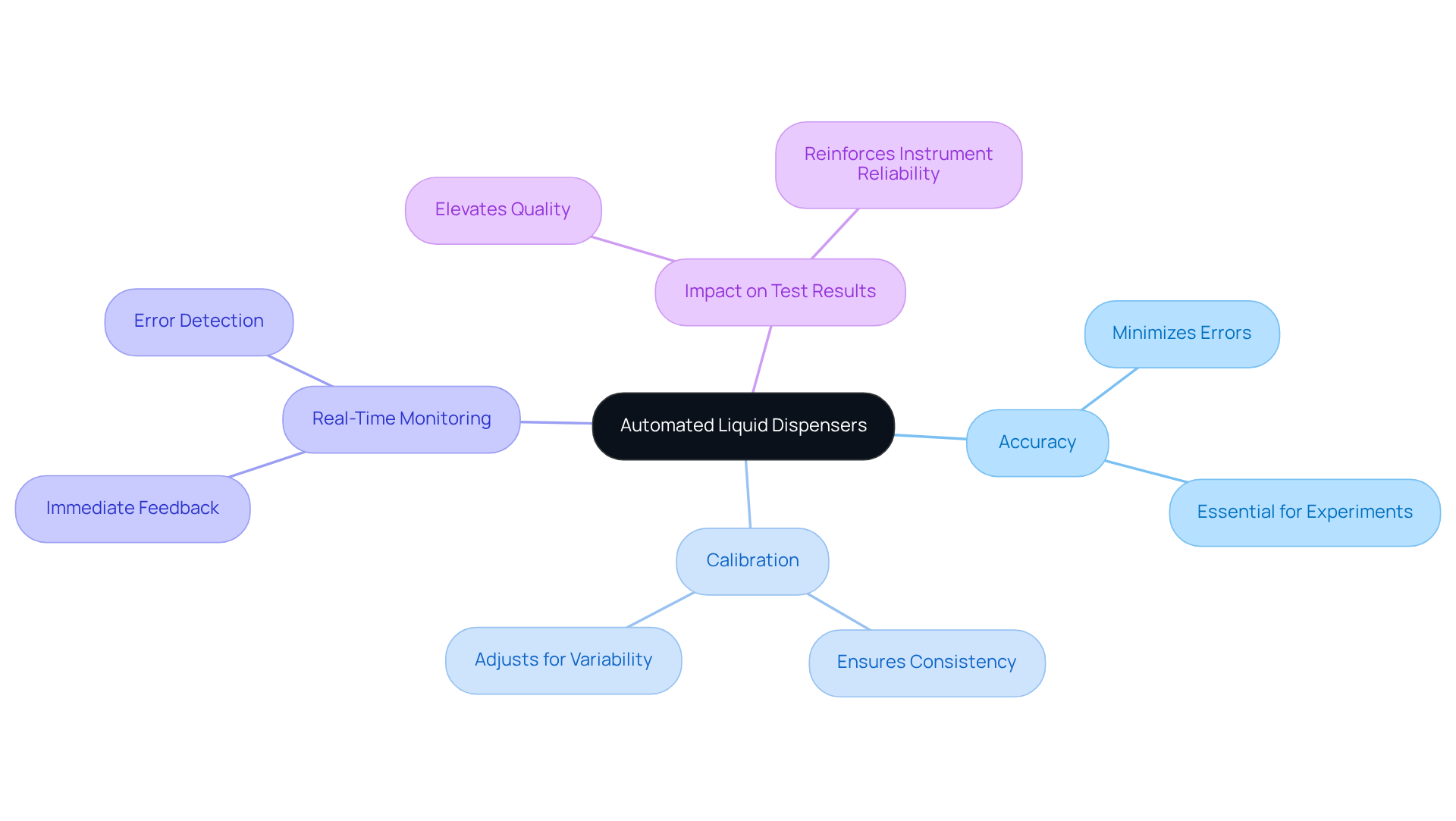
Time Efficiency: Reduce Manual Labor with Automated Liquid Dispensing
The use of an automated liquid dispenser in laboratories allows for the automation of the fluid dispensing process, significantly reducing the time spent on manual tasks. This efficiency allows researchers to concentrate on critical analysis and experimentation instead of repetitive fluid handling, which can be streamlined with an automated liquid dispenser. Consequently, labs can enhance throughput and effectively meet project deadlines, ultimately resulting in accelerated research outcomes.
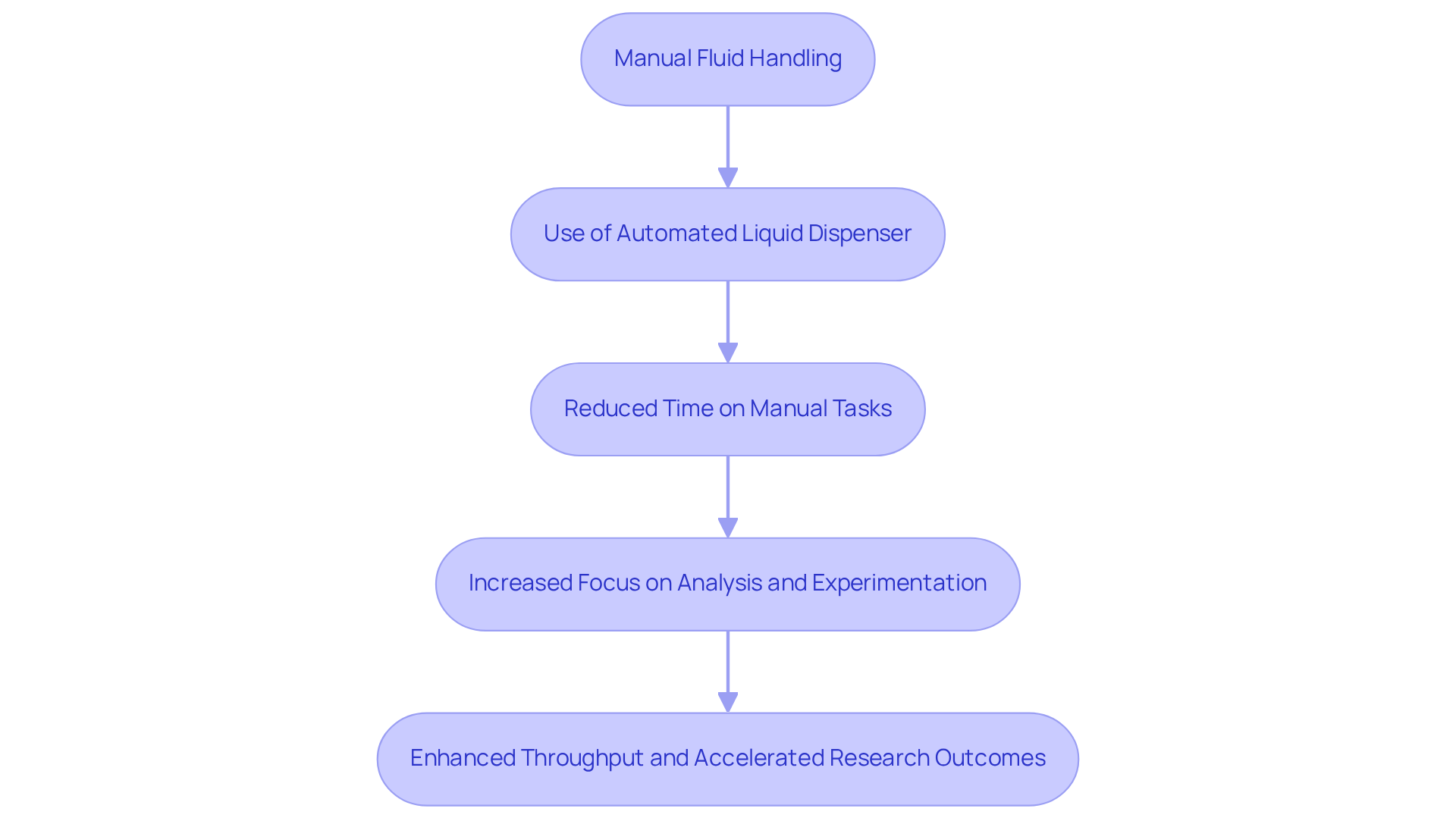
Consistent Results: Ensure Quality Control with Automated Dispensing Systems
The use of an automated liquid dispenser ensures that each fluid measurement occurs under consistent conditions, leading to uniform outcomes across experiments. This reliability is paramount for quality control, as it significantly reduces variability that may stem from manual dispensing. Laboratories can confidently rely on the reproducibility of their results, a critical factor for validating findings and upholding scientific rigor. In an environment where precision is non-negotiable, the use of automated liquid dispensers not only enhances operational efficiency but also reinforces the integrity of scientific research.
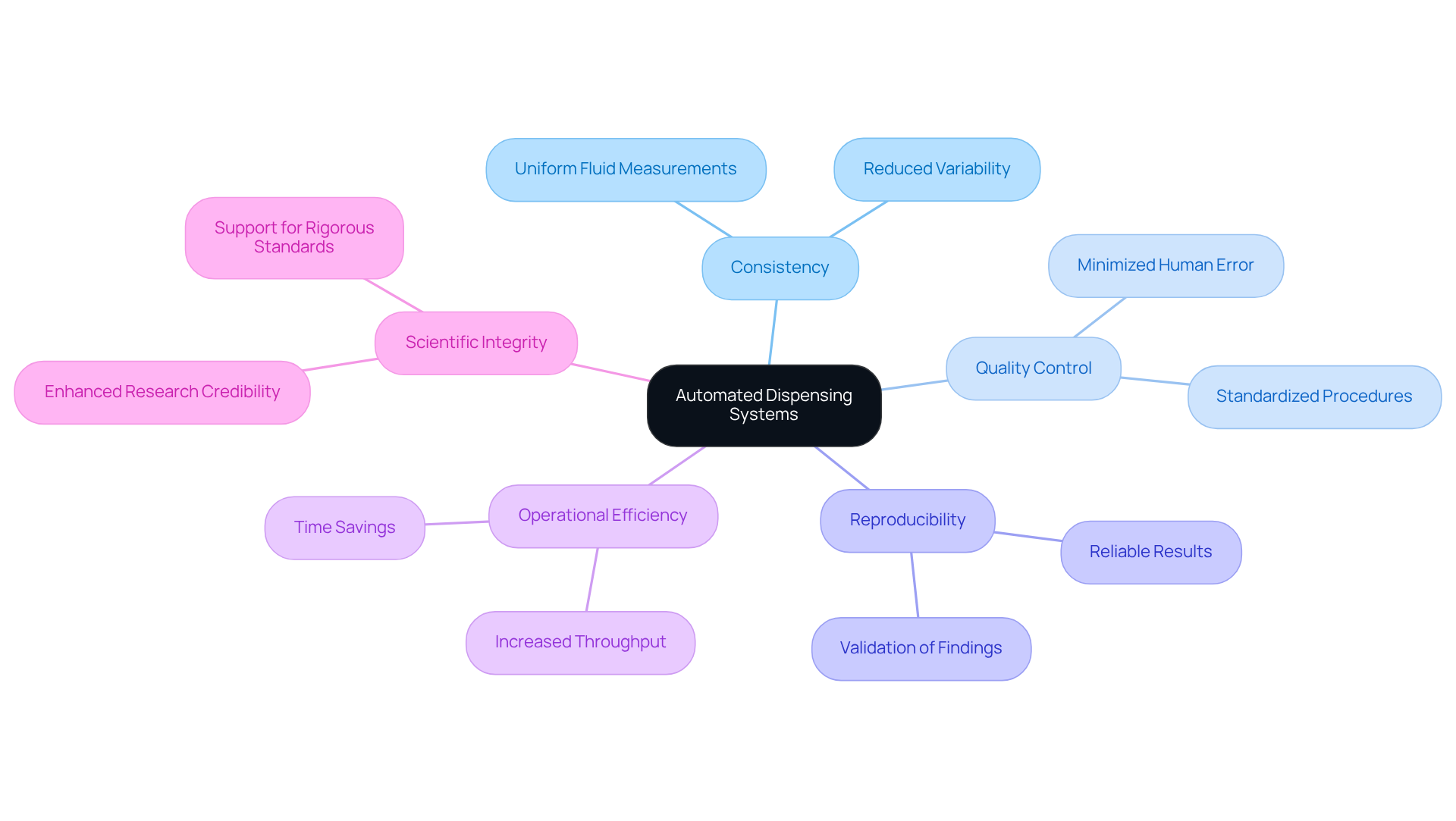
Improved Safety: Minimize Exposure to Hazardous Chemicals with Automation
The use of automated liquid dispensers signifies a substantial improvement in safety protocols within laboratory environments. By minimizing the manual handling of hazardous chemicals, these devices drastically reduce staff exposure to potentially harmful substances. This reduction not only mitigates the risk of accidents and health concerns but also plays a crucial role in helping facilities comply with stringent safety regulations and standards. Thus, the implementation of an automated liquid dispenser is not merely a precaution; it serves as a proactive measure that safeguards personnel while enhancing operational efficiency.
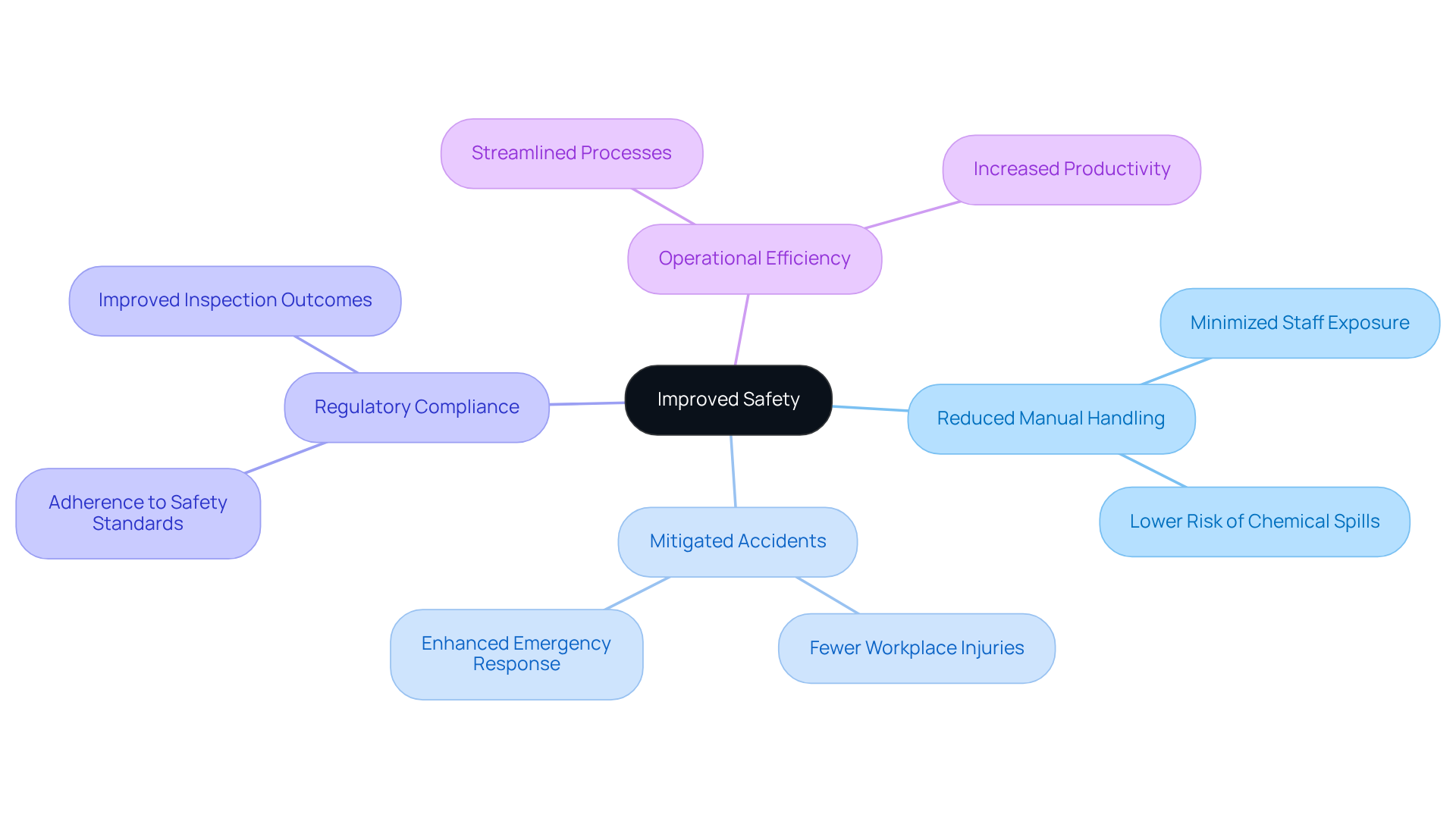
Versatile Applications: Utilize Automated Dispensers Across Different Lab Processes
Automated liquid dispensers serve as versatile self-operating fluid distribution devices, applicable across a spectrum of experimental processes, from sample preparation to reagent distribution. Their inherent adaptability positions them as essential tools in various applications, such as chemical analysis, biological assays, and quality control testing, particularly when utilizing an automated liquid dispenser. This versatility not only enhances operational efficiency but also empowers facilities to maximize their investment in automation through the use of an automated liquid dispenser, as these devices seamlessly integrate into diverse workflows. By understanding the significance of these instruments, laboratories can elevate their research capabilities and ensure precision in their processes.
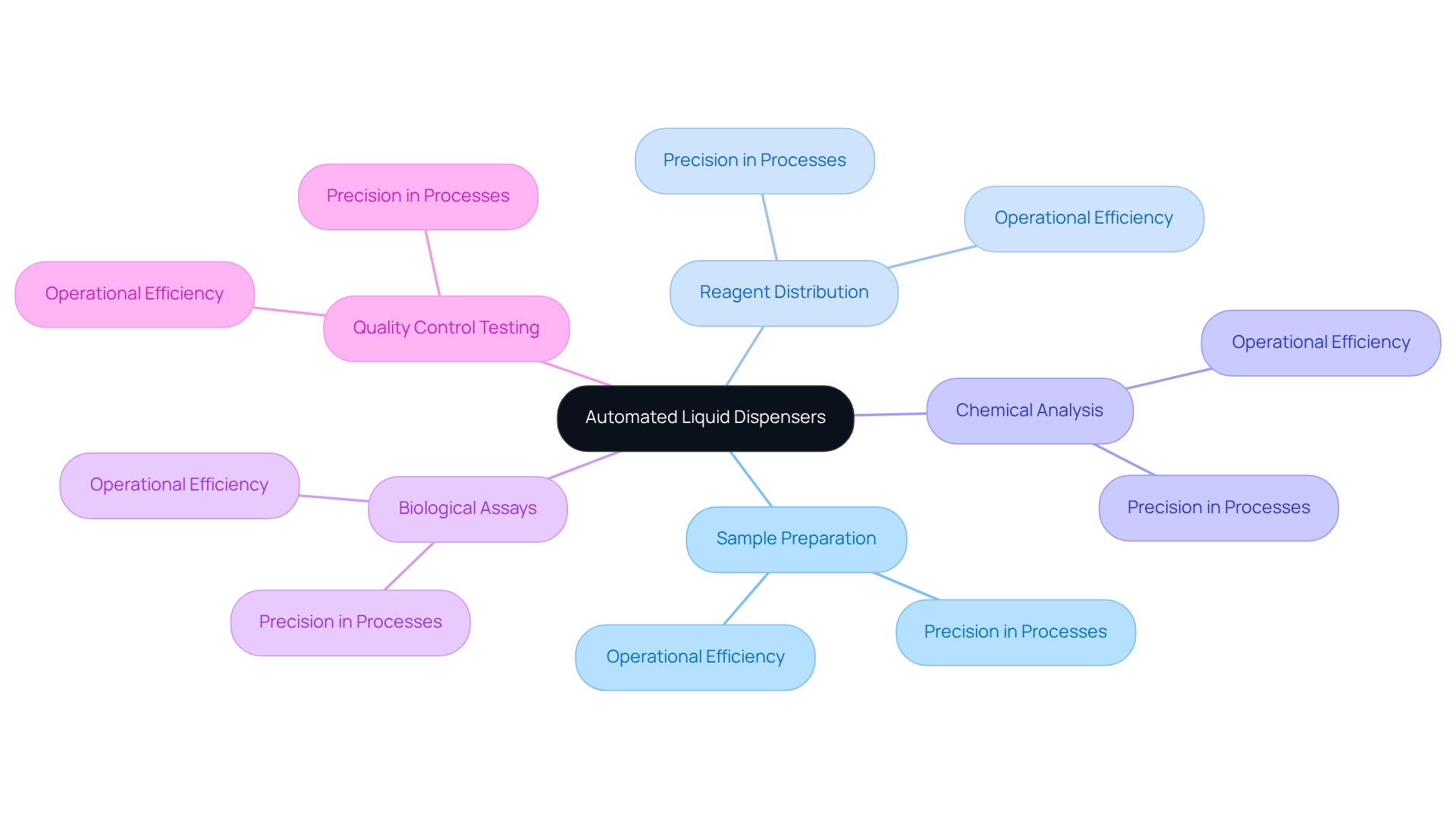
Cost-Effectiveness: Reduce Waste and Save on Reagents with Automation
Automated liquid dispensers play a crucial role in reducing waste by delivering precise amounts of liquids, thereby minimizing the excessive use of reagents. This level of accuracy not only conserves valuable materials but also results in significant cost savings over time. By optimizing reagent usage, facilities can allocate their budgets more effectively, paving the way for investments in other essential areas of research and development. Ultimately, the adoption of automated liquid dispensers is not merely a matter of efficiency; it is a strategic move that enhances the overall productivity and sustainability of laboratory operations.
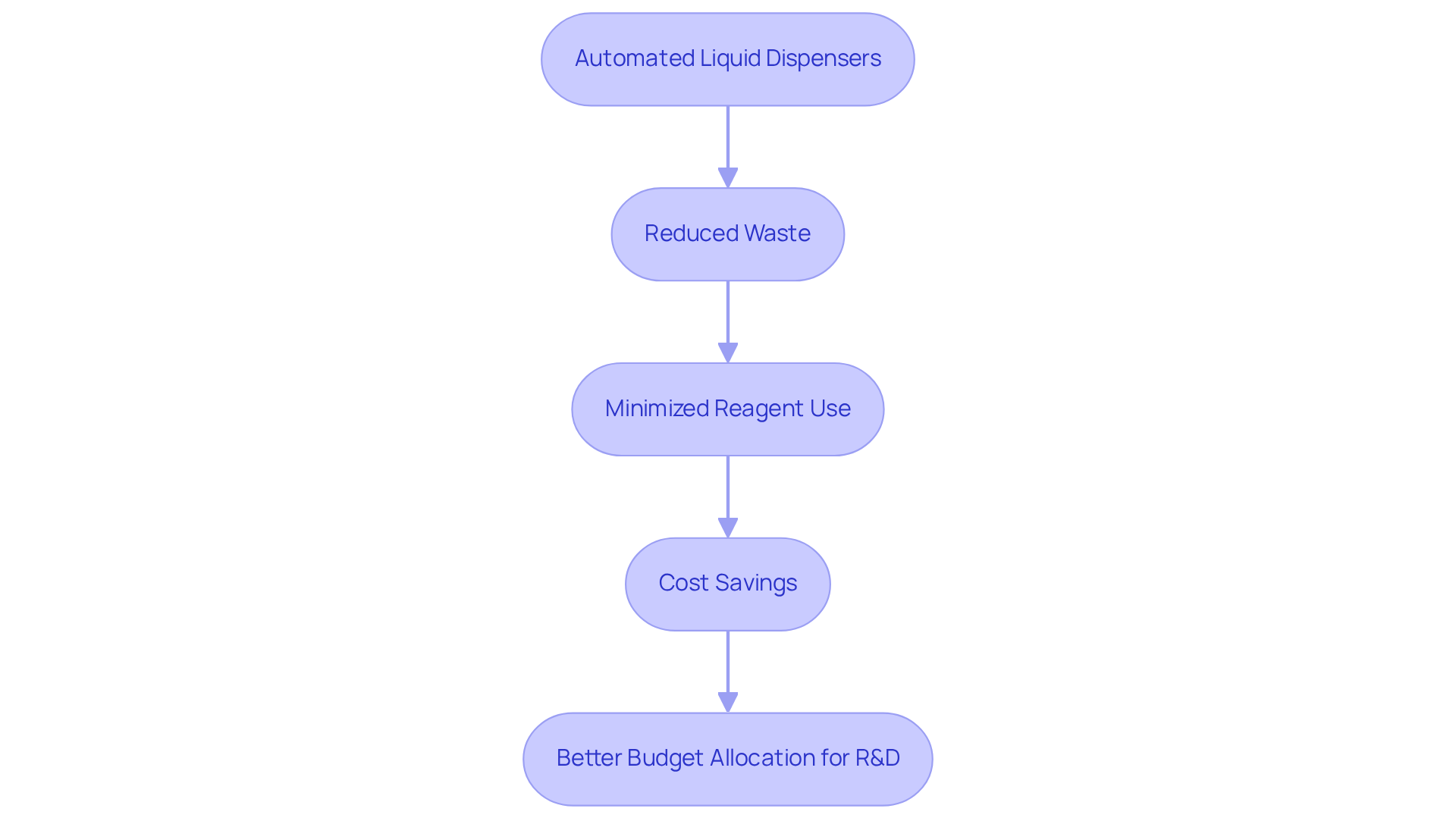
Seamless Integration: Connect Automated Dispensers with Your Lab Equipment
The JM Science Liquid Dispenser is designed for seamless integration with existing laboratory equipment, capturing attention with its innovative connectivity features. This integration facilitates streamlined workflows, allowing for efficient data sharing between devices, which enhances overall operational efficiency.
By combining dispensers with other instruments, research facilities can establish a cohesive system that significantly improves data accuracy and reduces the likelihood of errors associated with manual data entry.
In essence, the Liquid Dispenser not only optimizes laboratory processes but also reinforces the integrity of scientific research.
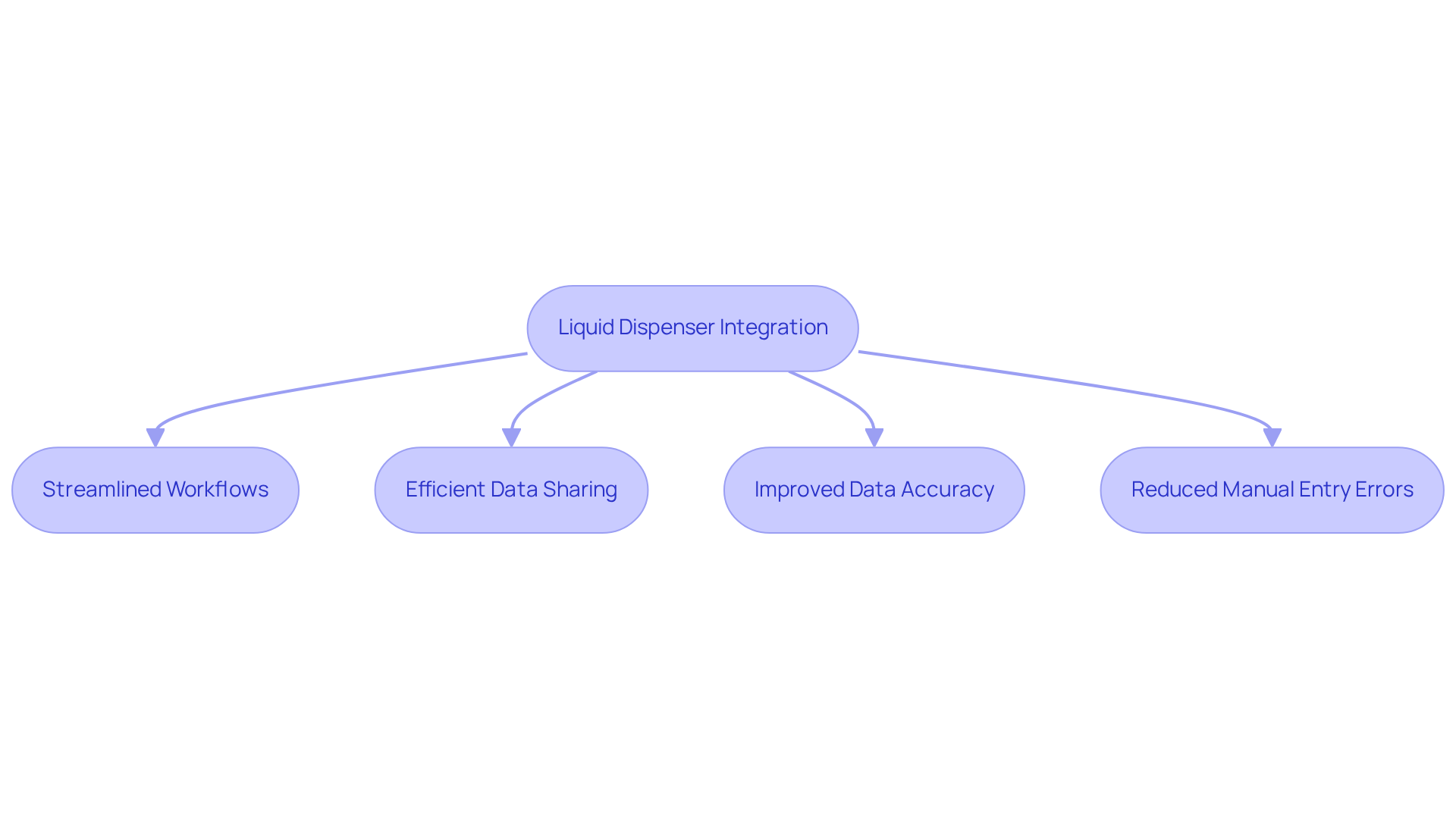
Data Management: Enhance Record-Keeping with Automated Dispensing Solutions
The use of an automated liquid dispenser significantly enhances data management by providing accurate records of fluid dispensing activities. These advanced systems automatically log data, ensuring that all measurements are documented in real-time. This capability not only supports compliance with regulatory standards but also simplifies data retrieval for analysis and reporting. Ultimately, this leads to improved operational efficiency, making the automated liquid dispenser indispensable in laboratory settings.
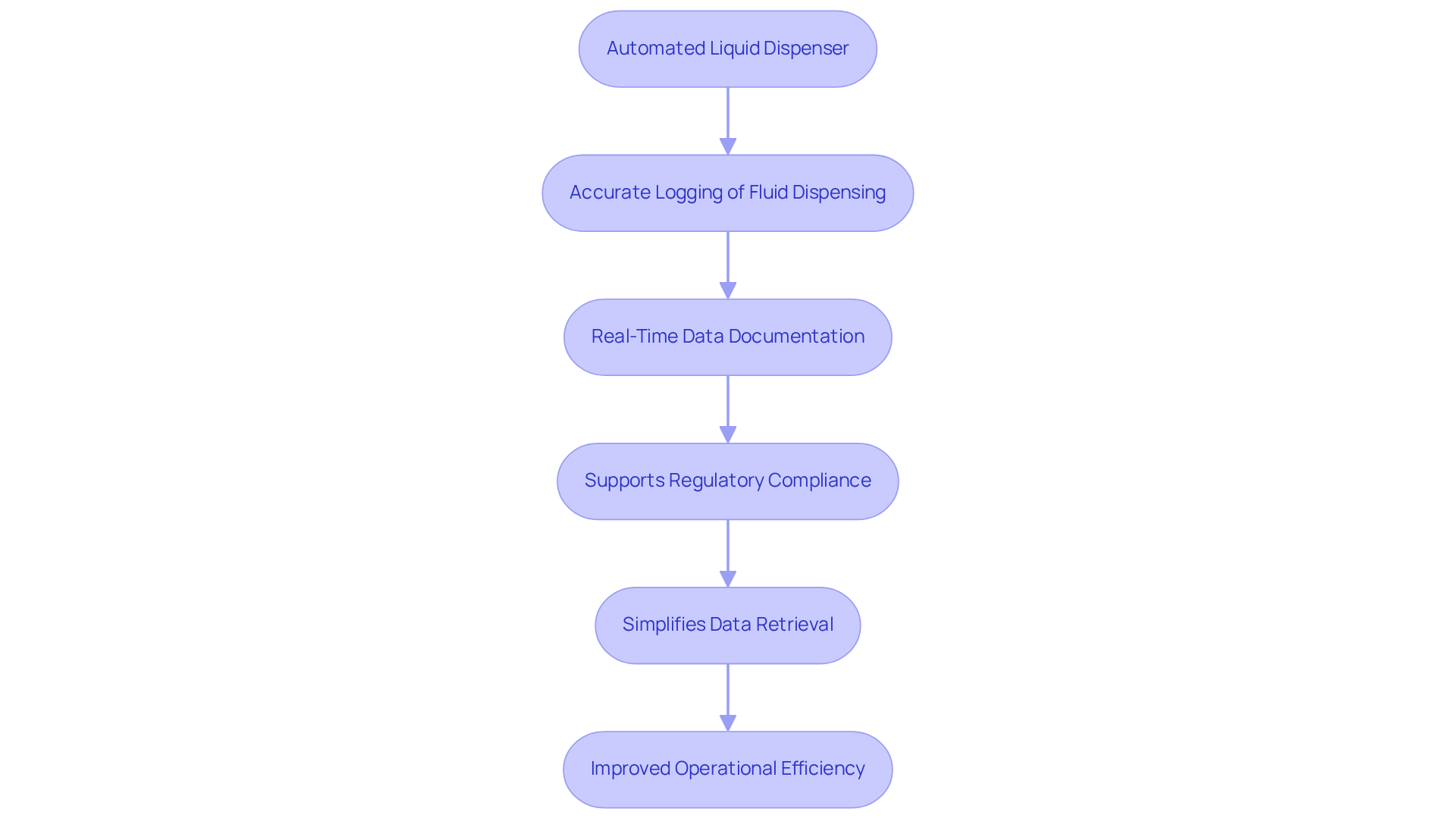
Comprehensive Support: Access Training and Resources from JM Science
JM Science provides comprehensive support for its automated liquid dispenser systems, ensuring that personnel are equipped to optimize their usage effectively. With access to , application libraries, and expert consultations, users are empowered to operate the dispensers with confidence. This robust support not only enhances user proficiency but also plays a crucial role in the successful integration of the automated liquid dispenser within laboratory workflows. By establishing a foundation of knowledge and resources, JM Science fosters an environment where automation can thrive, ultimately leading to improved efficiency and productivity in scientific research.
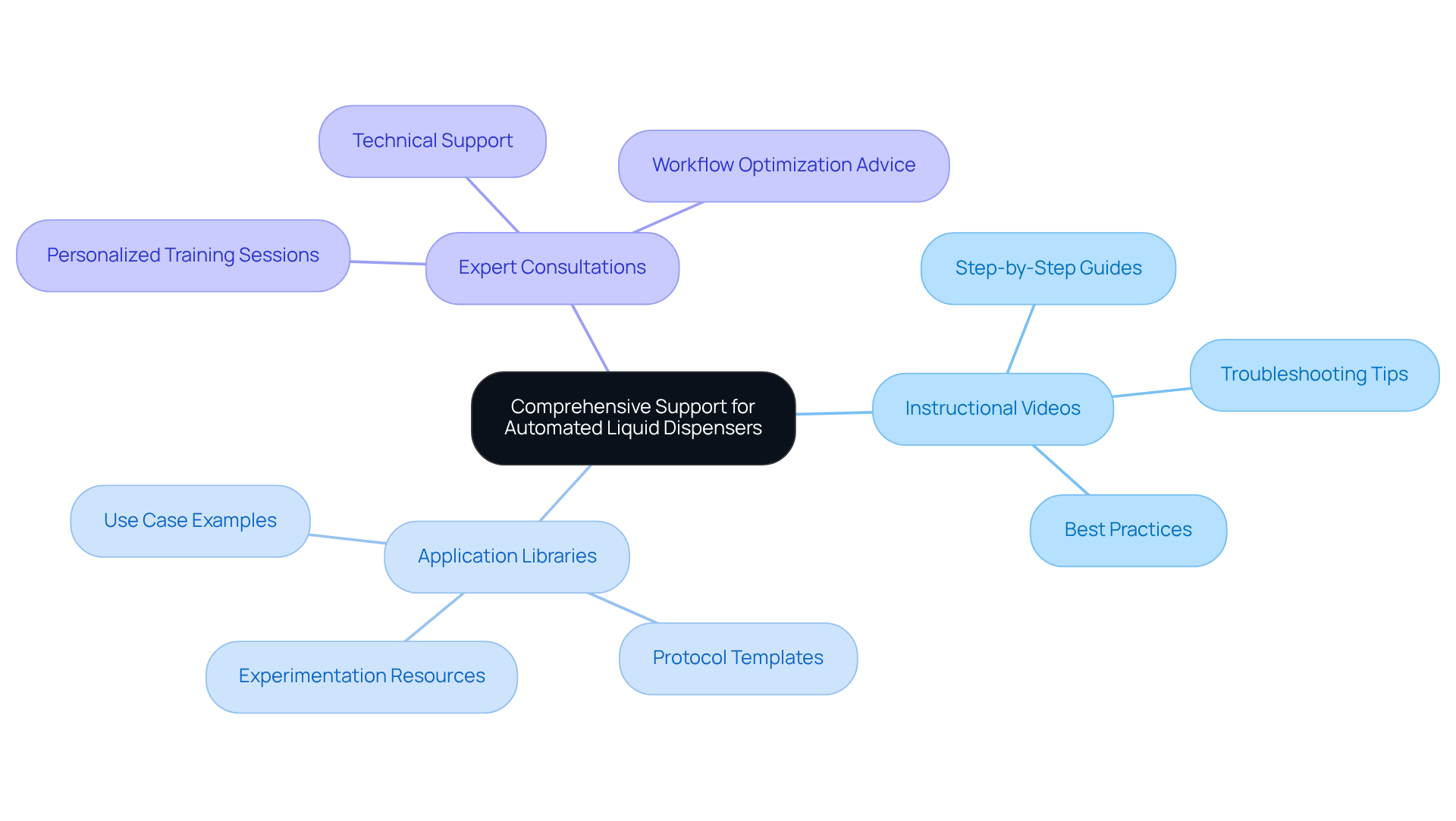
Conclusion
The implementation of automated liquid dispensers in laboratory settings represents a transformative shift in fluid handling approaches. These devices not only enhance precision and efficiency but also significantly mitigate the risk of human error, enabling laboratories to operate at optimal levels. By automating the dispensing process, researchers can direct their efforts toward more complex and critical tasks, ultimately leading to improved outcomes and adherence to stringent regulatory standards.
Key benefits of automated liquid dispensers include:
- Enhanced measurement accuracy
- Time efficiency
- Consistent results
- Improved safety protocols
Their versatility across various laboratory applications, combined with the ability to minimize waste and reduce costs, underscores their significance in modern scientific research. Furthermore, seamless integration with existing lab equipment and robust support from manufacturers like JM Science ensures that laboratories can fully leverage these advanced systems for maximum efficiency.
In light of these advantages, laboratories should consider adopting automated liquid dispensers as a strategic investment in their operational capabilities. By embracing automation, facilities can enhance productivity and safety while contributing to the overall integrity and quality of scientific research. The future of laboratory work is undeniably leaning towards automation, making it essential for institutions to stay ahead of the curve and embrace these innovative solutions.




